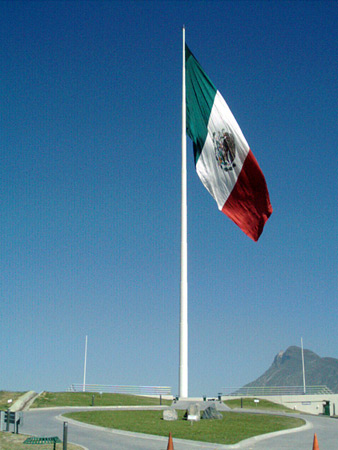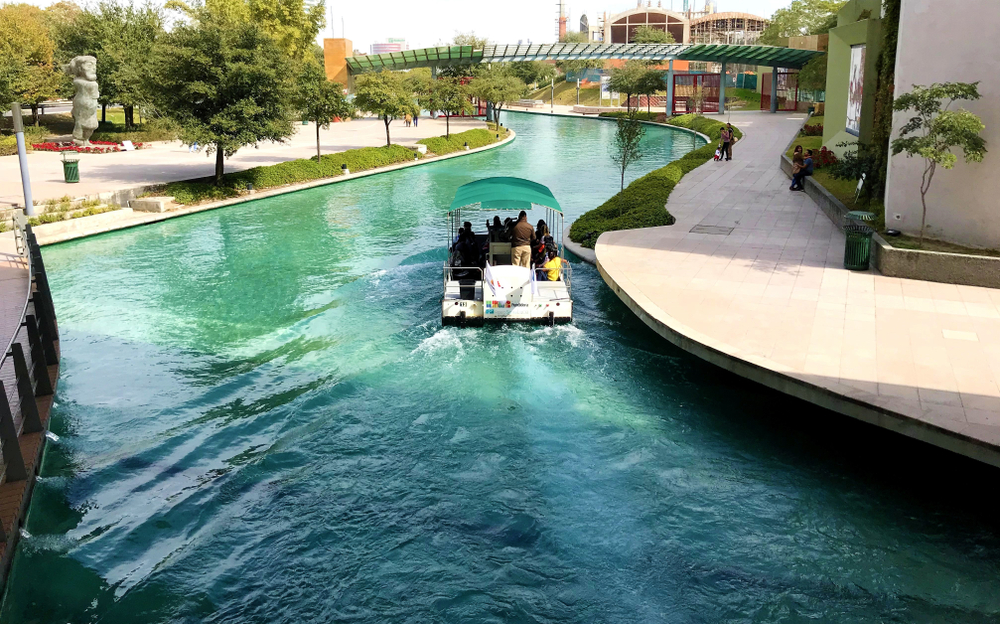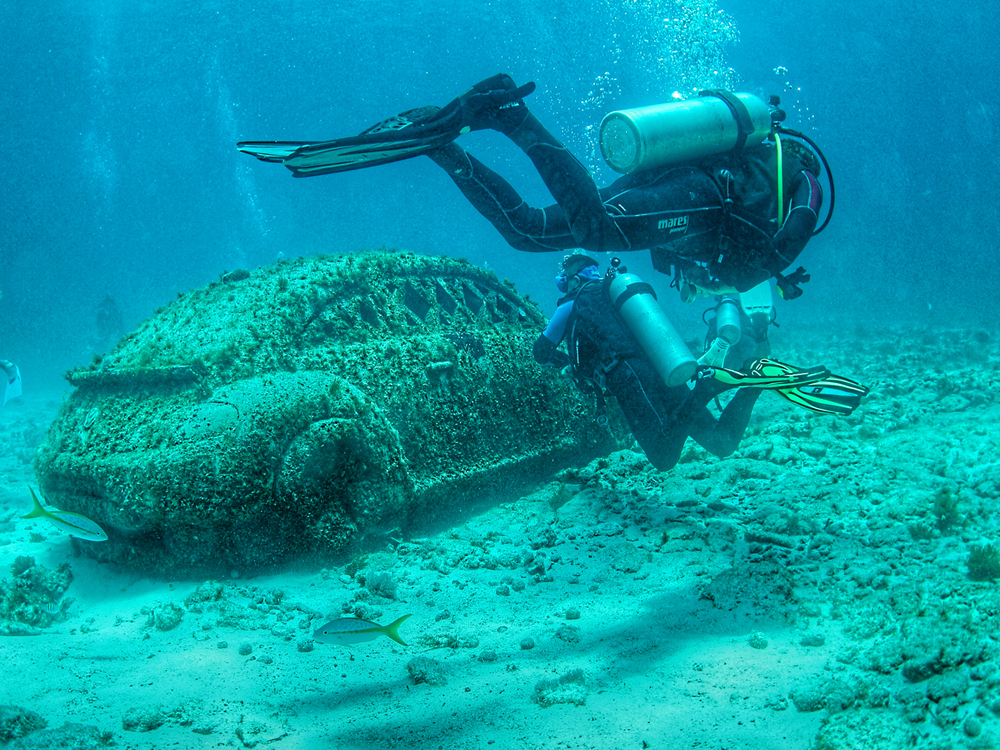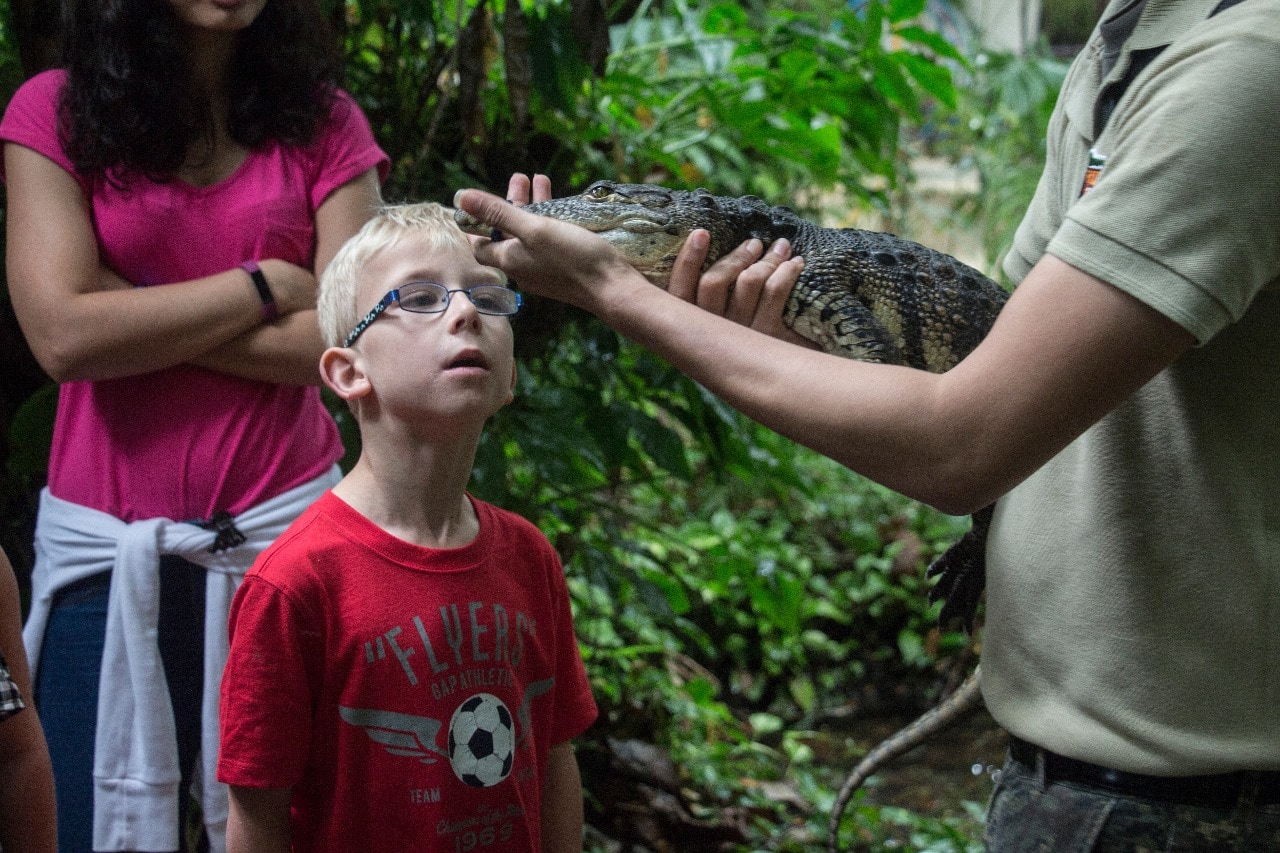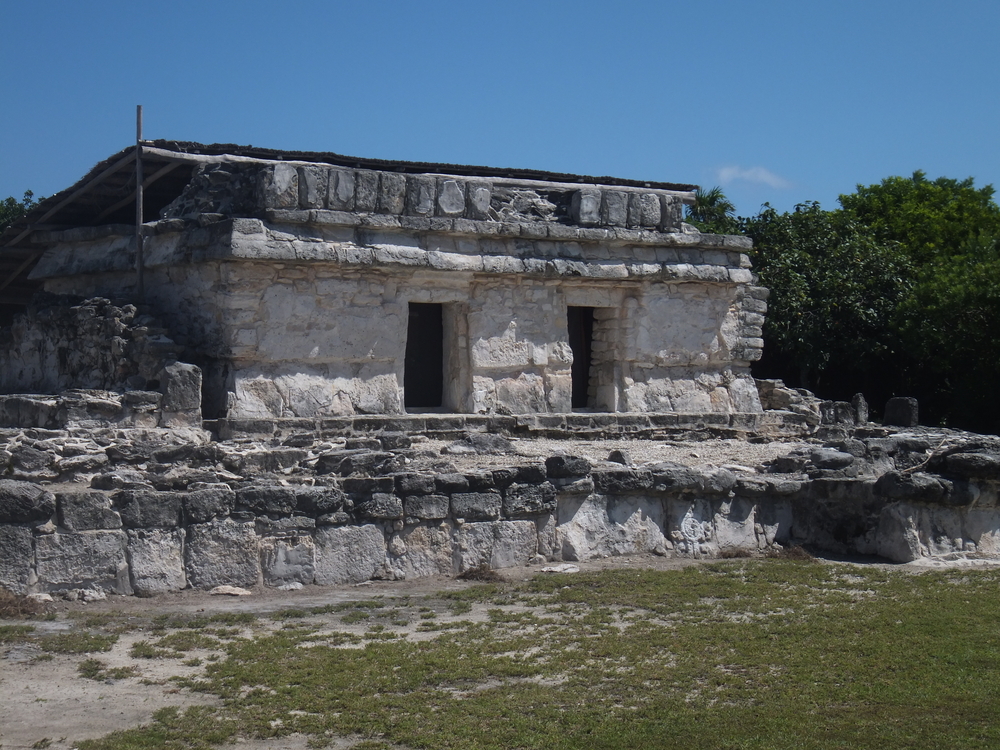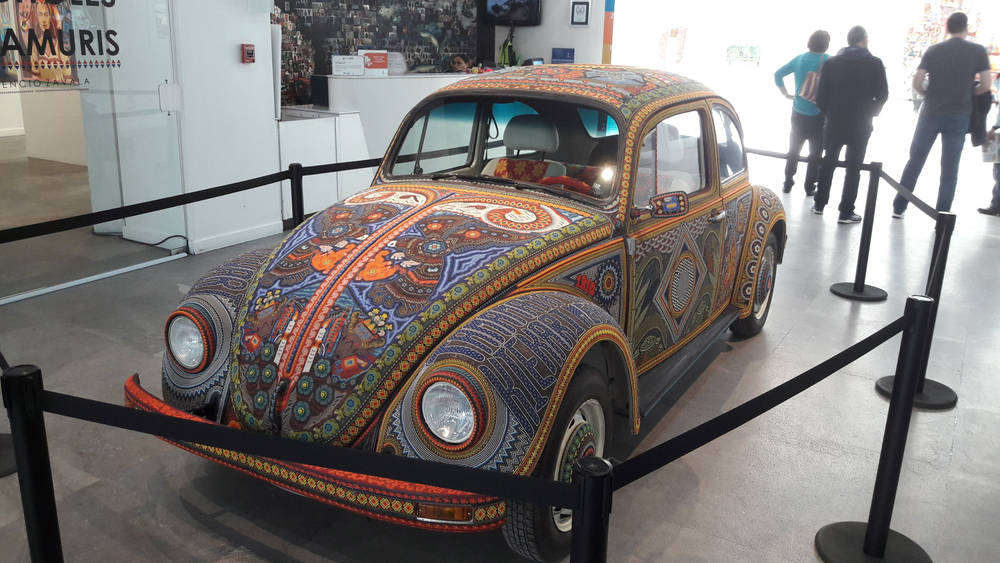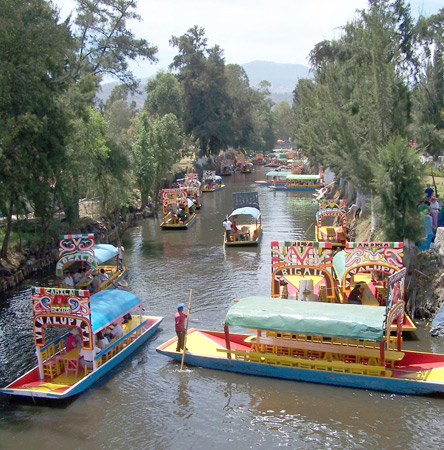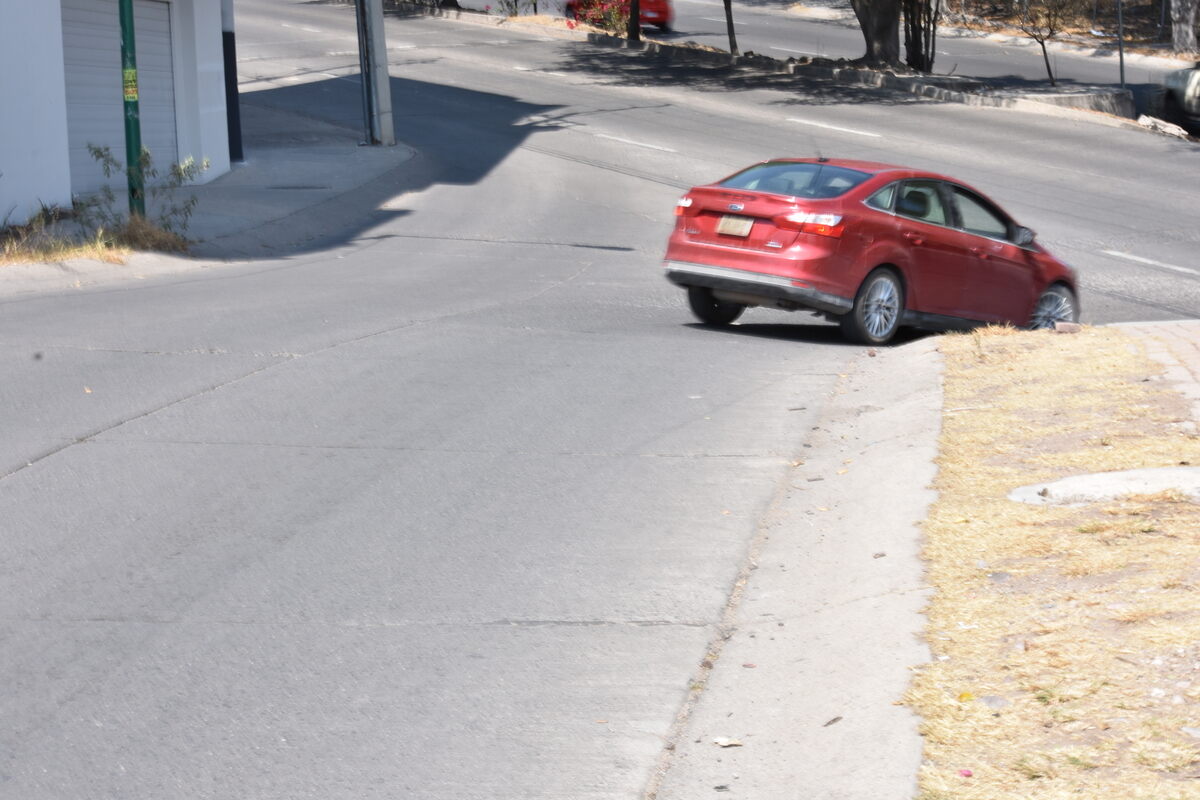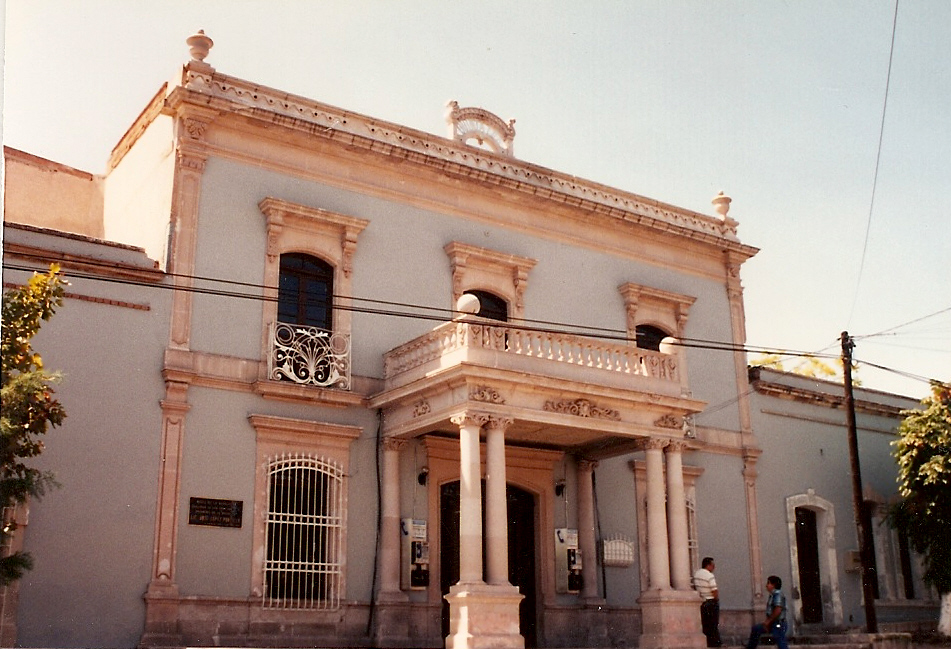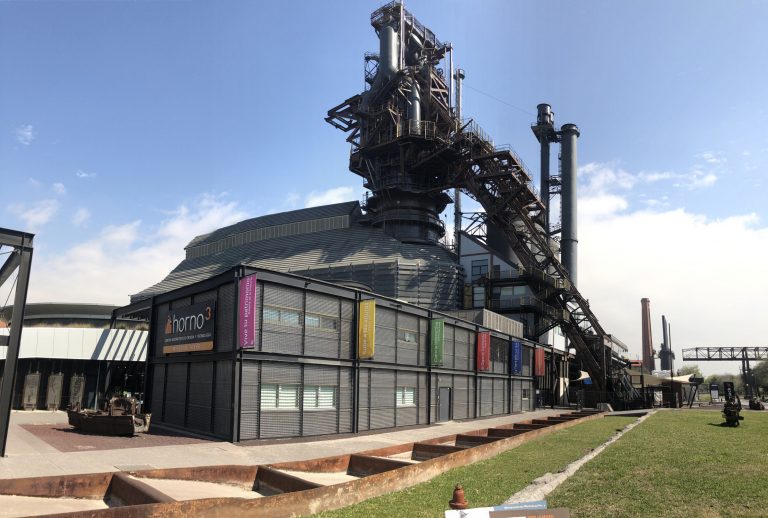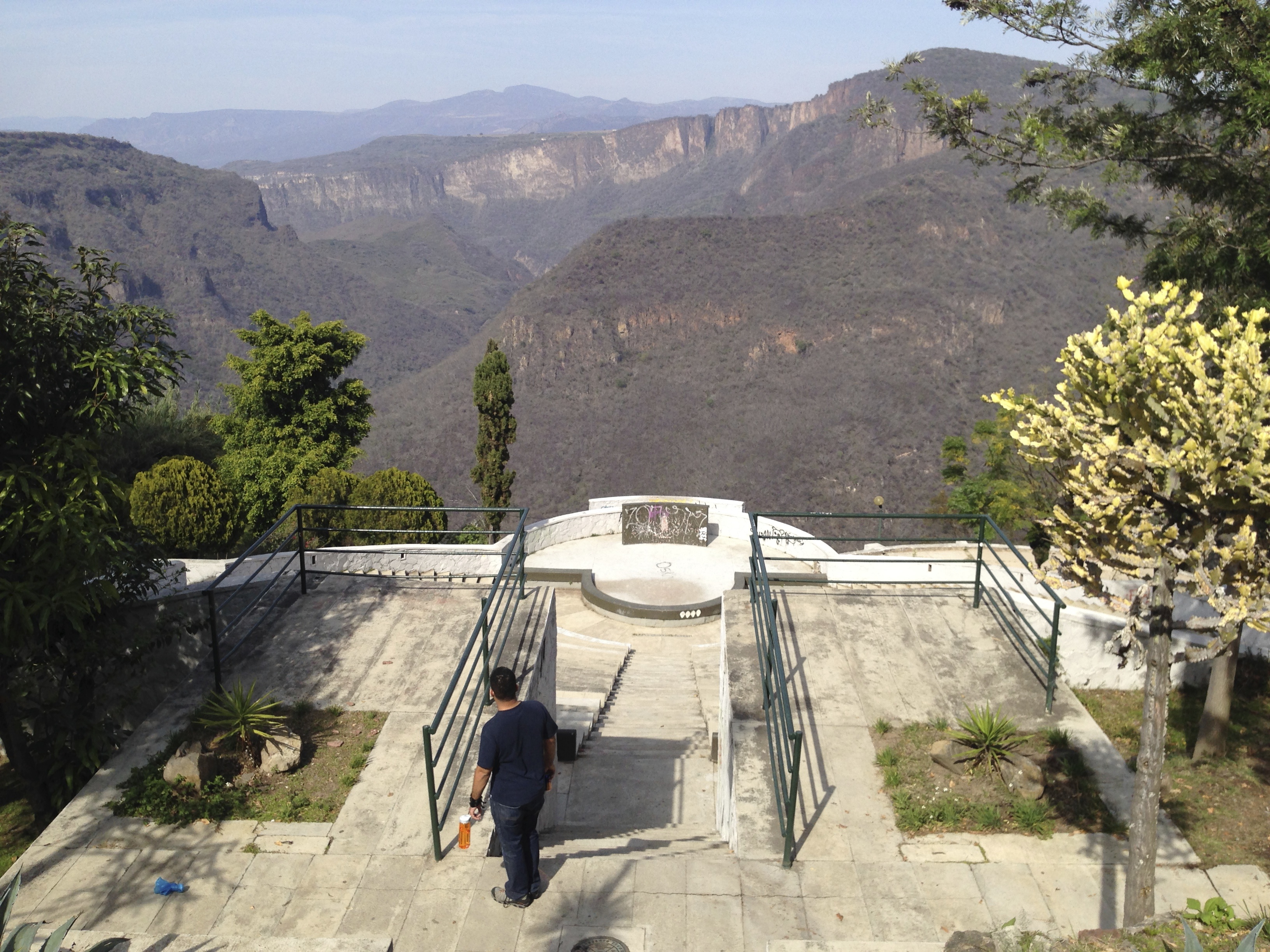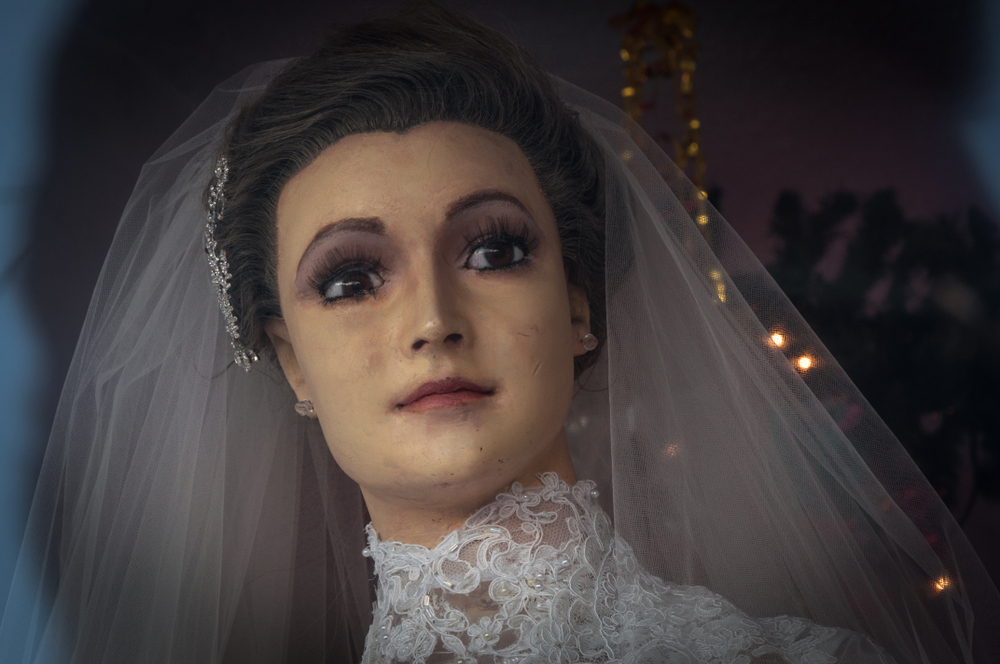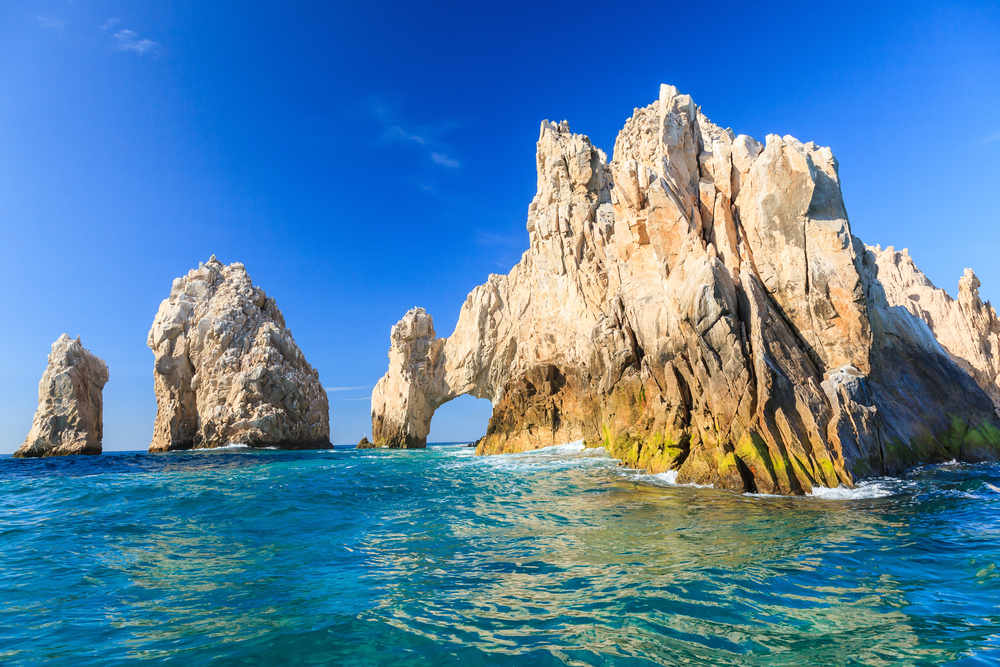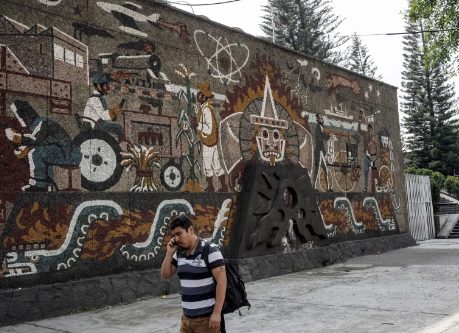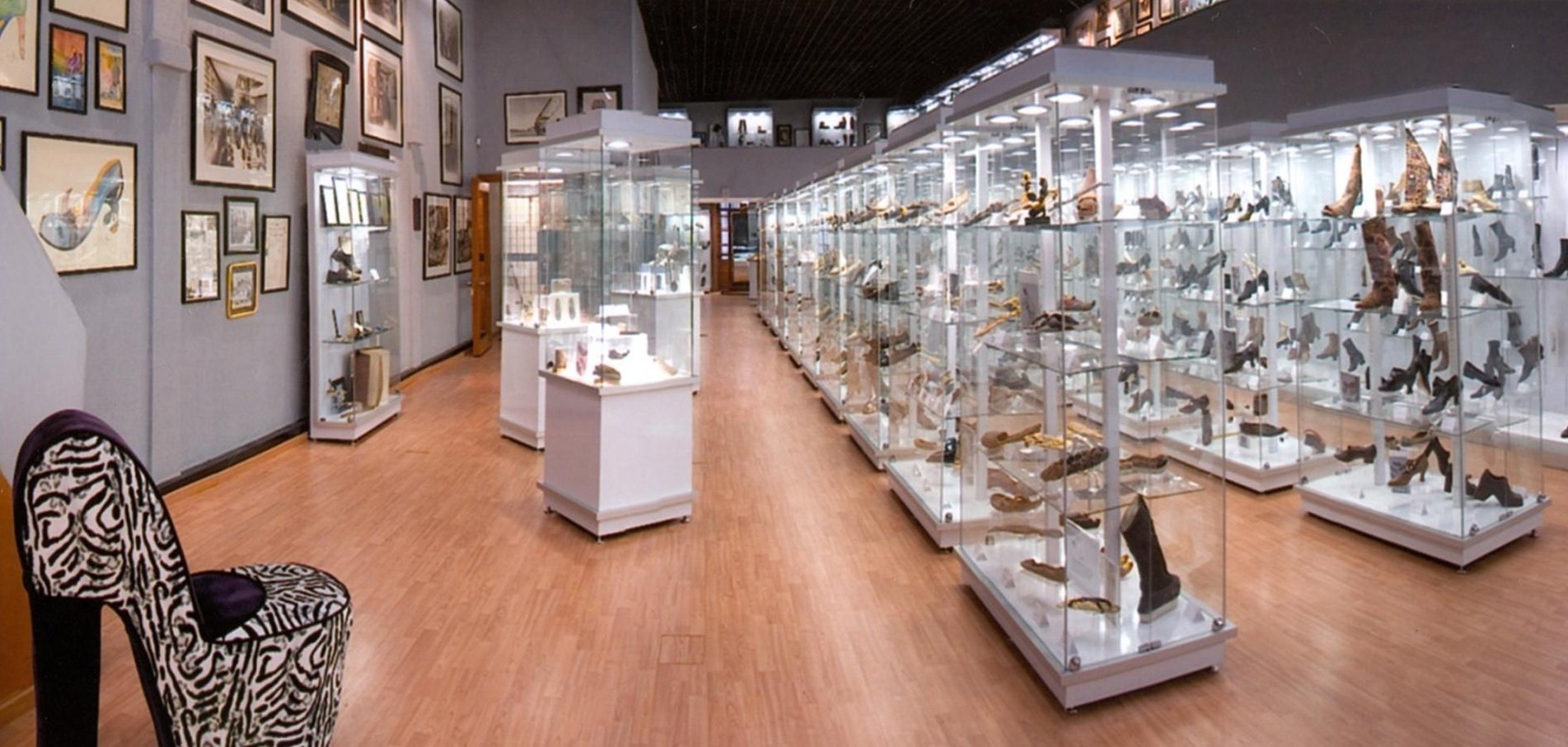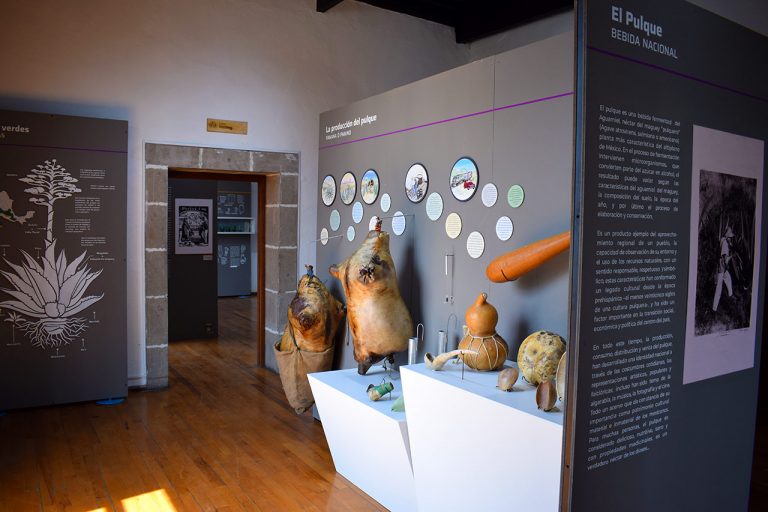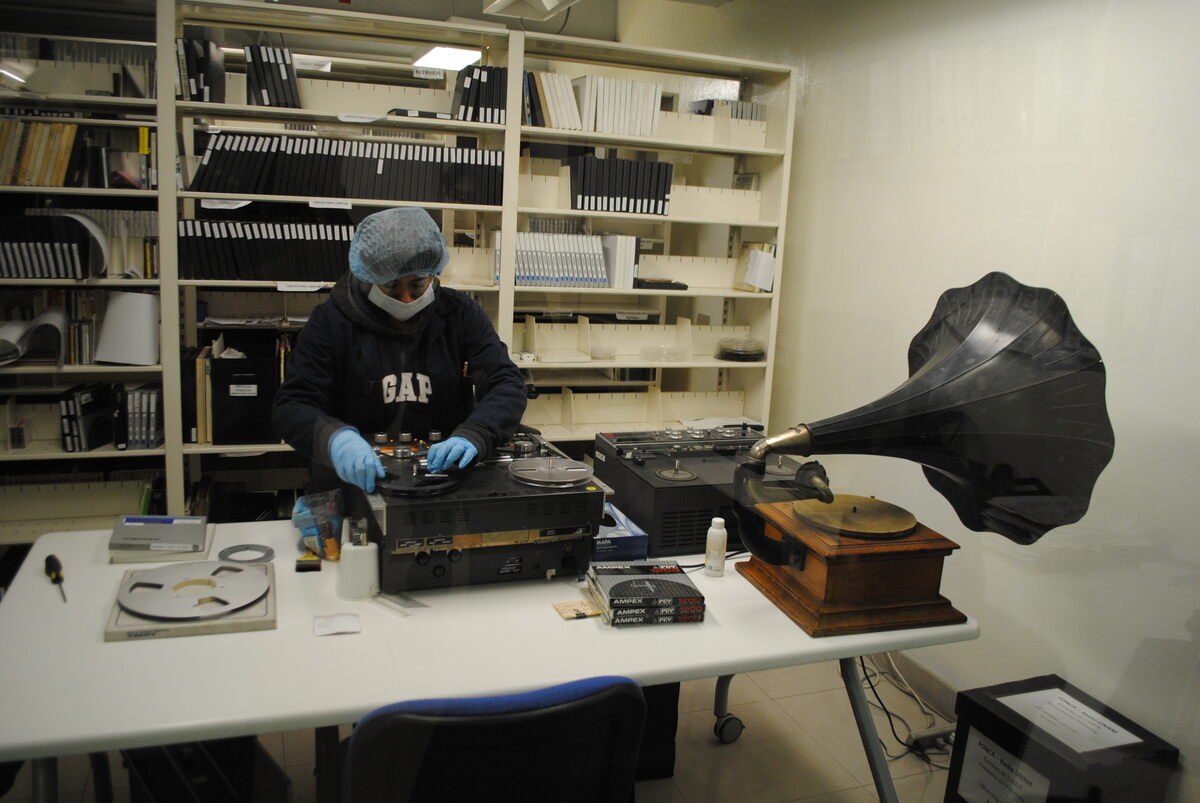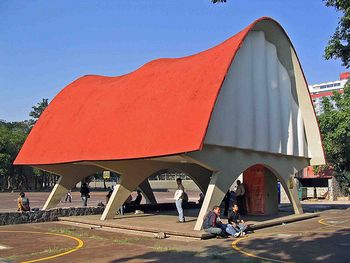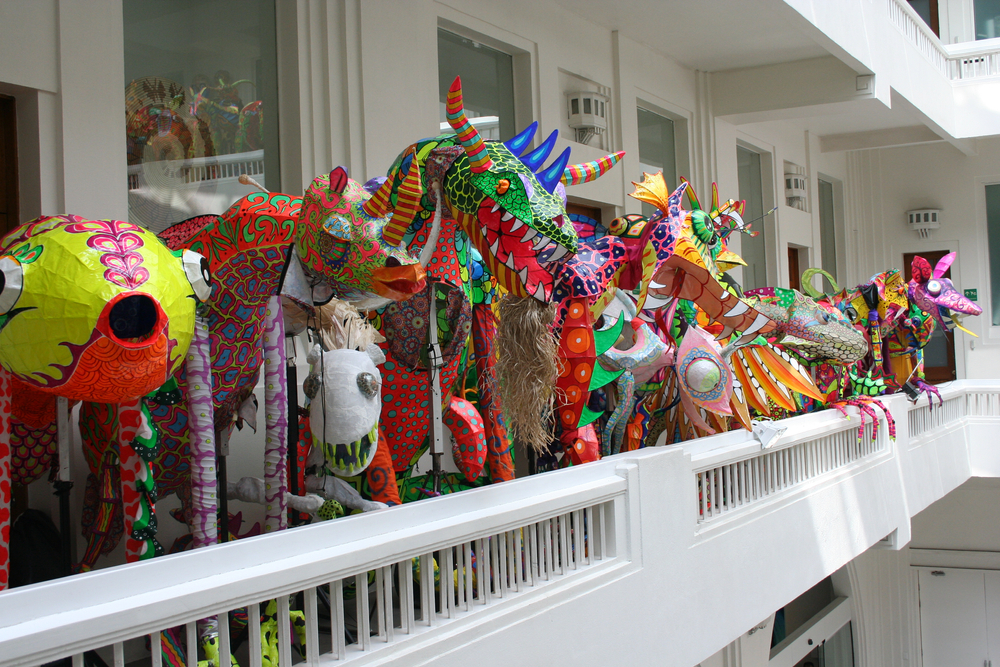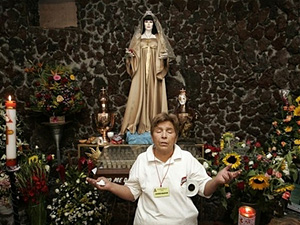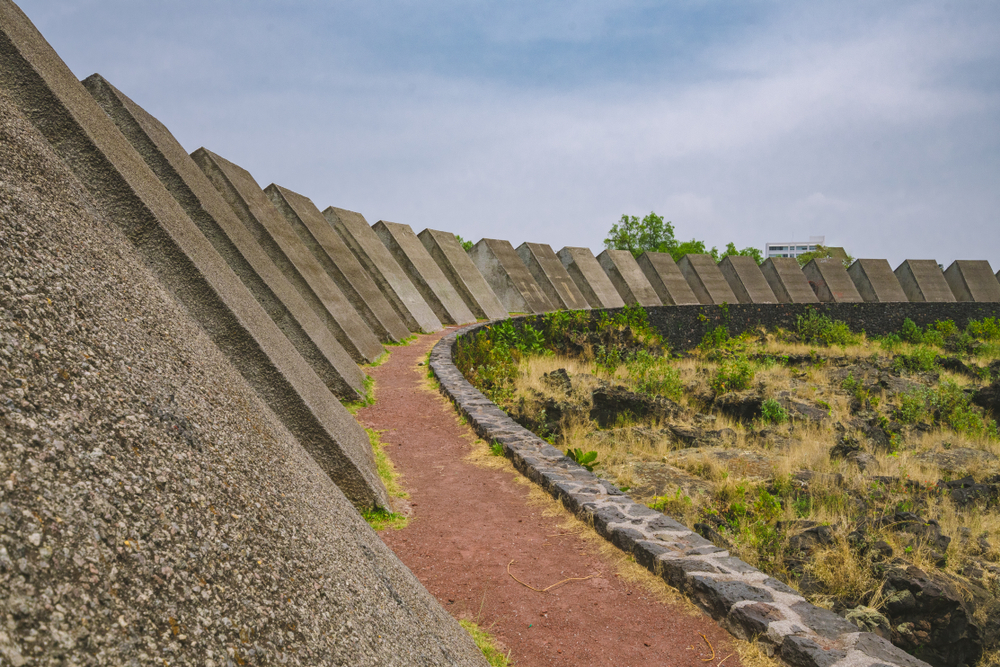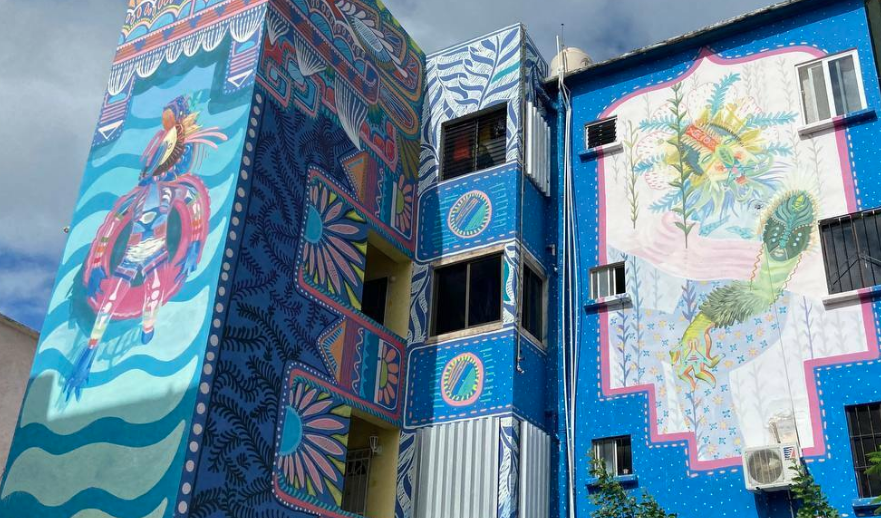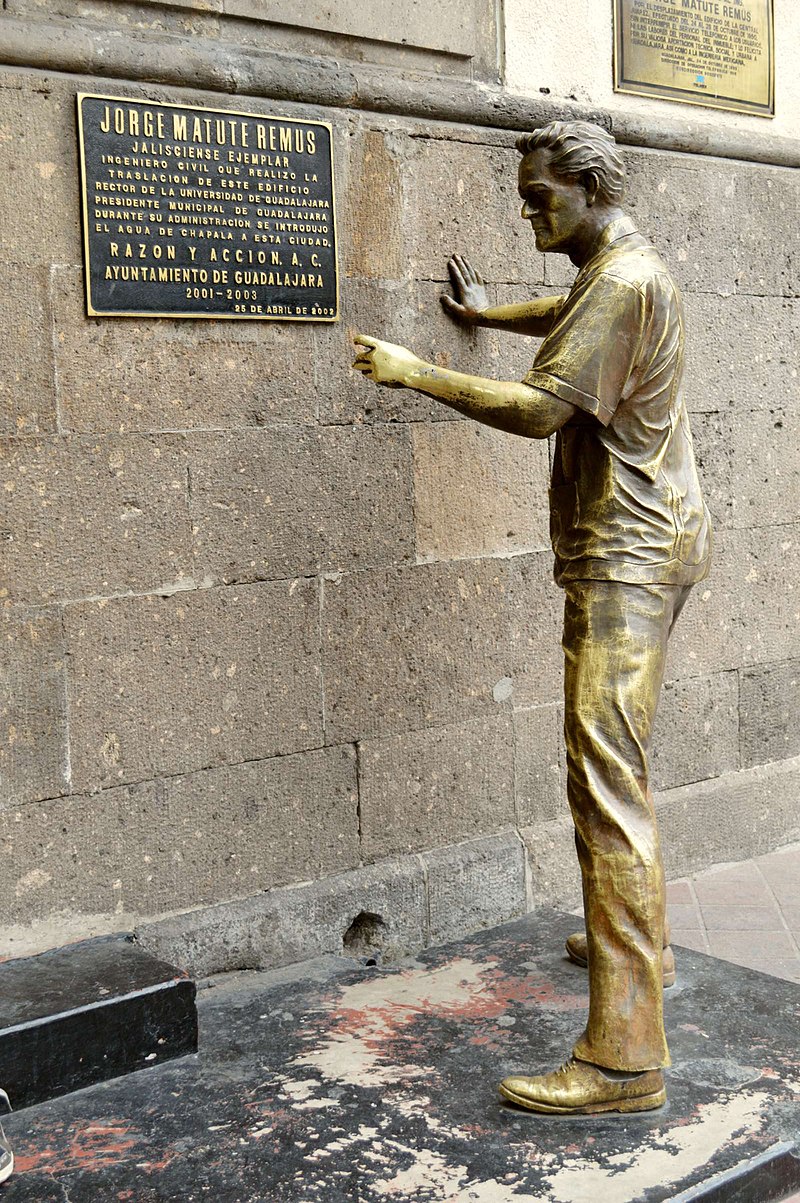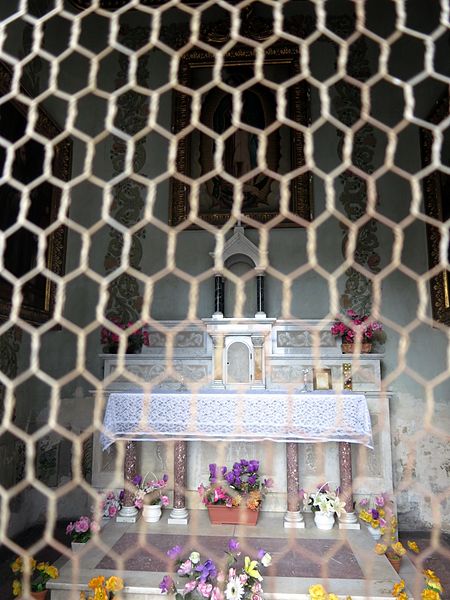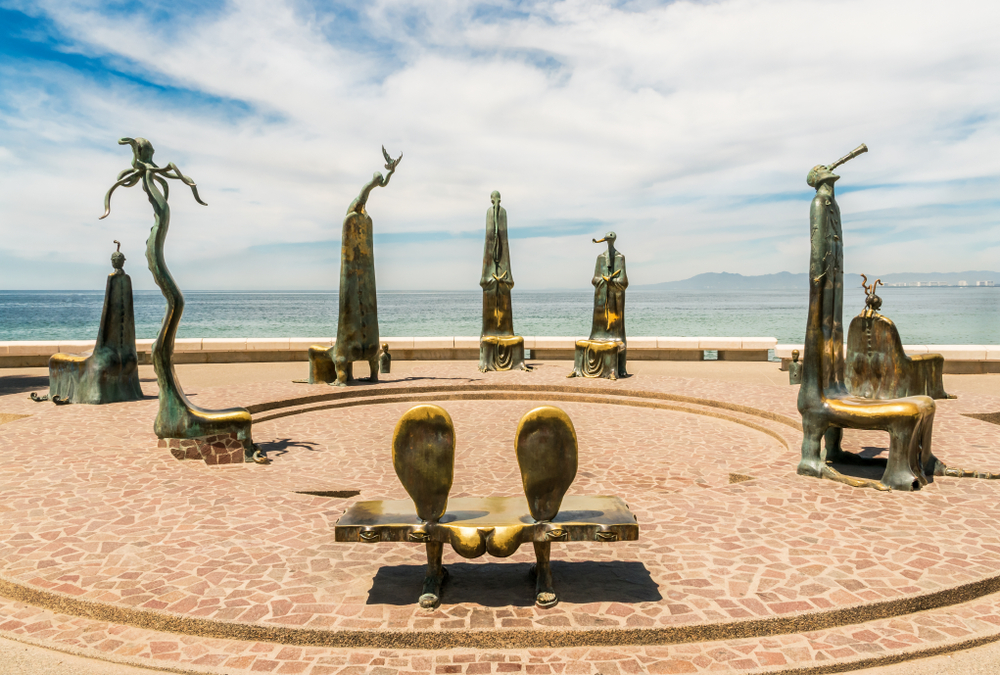Points of Interest
Bishopric Lookout
Mirador del Obispado Rafael José Vergel Col. Obispado
Monterrey, Mexico
Bishopric Lookout, on top of the Cerro del Obispado (Bishopric Hill), was named for a bishop's retirement home that was built there in the 18th century. The largest Mexican flag in the country crowns the hill, along with a 40-meter-long (131-foot-long) walking path. The 50-meter-wide by 29-meter-tall (164 by 95 ft) flag weighs 230 kilograms (507 pounds), and the flagpole weighs 120 metric tons (132 US tons) and stands 100 meters (328 ft) tall. Unfortunately, the flag is not usually displayed on windy days because it tears easily and repairs are costly. The walking path winds around the top of the hill and is suitable for families or large groups. Tourists who visit on special holidays like Flag Day, on February 24, or Independence Day, on September 16, will be treated to fireworks and live performances.
Boat Ride on Paseo Santa Lucia
Fundidora and Adolfo Prieto S/N
Obrera, Monterrey, Nuevo León, Mexico
Take a relaxing boat ride and see the sights, as this artificial canal connects the Macroplaza to Parque Fundidora. The canal is 2.3 kilometers (1.4 miles) long, with guided canal tours offering a history of the city and information about its attractions. Pass under bridges, see 24 illuminated fountains, see murals by Monterrey artists, and lots of green spaces. Considered one of Mexico’s man-made wonders, a tour along the Paseo Santa Lucia is a great way to see expansive Parque Fundidora and decide where you want to backtrack and visit. Boats run every day from both the Macroplaza and Parque Fundidora, from 10 a.m. to 9:30 p.m. Kids under age 5 ride for free.
Cancun Underwater Museum
Museo Subacuático de Arte, or MUSA Km 18 Kukulcán Boulevard, Hotel Zone
77500 Cancún, Mexico
Scuba divers will enjoy Cancun Underwater Museum, also called MUSA, though there are other ways to see the underwater sculptures. About 500 sculptures were created by British sculptor Jason deCaires Taylor and five Mexican artists, and each sculpture or group of sculptures has a different meaning and name that depicts a specific theme. MUSA has two galleries, the Salon Manchones and Salon Nizuc. Salon Manchones is best for divers, with sculptures sitting between 8 to 10 meters (26 and 33 feet), while Salon Nizuc is best for snorkeling, with sculptures sitting at 2 to 4 m (6.5 to 13 ft). The sculptures create an artificial reef for local sea life as well. You can snorkel here though the views will be from above only, Glass bottom boat tours are offered as well.
Croco Cun Zoo
Kilometer 31, Tulum
77580 Cancun, Mexico
At Croco Cun Zoo, you will be able to touch, hold, and feed a great variety of local wild animals. If you are brave enough, walk among crocodiles or hold snakes. Get to know vulnerable species like monkeys, turtles, and birds and learn how to protect them. Most of the specimens have come to Croco Cun Zoo as donations, as well as rescues or seizures that the environmental authorities have placed under the zoo’s care. Admission to Croco Cun Zoo includes a 60-minute guided tour during which you can see, touch, and feel the animals. Children age 5 and under get in free. Croco Cun Zoo is located about 40 minutes south of Cancun and includes a café, gift shop, children’s playground, and outdoor picnic area.
—Information provided by Croco Cun Zoo
El Rey Ruins
Km 18 Kukulcán Boulevard, Hotel Zone
77500 Cancún, Mexico
El Rey is one of the most important archaeological sites on Cancun Island. Although it originated as a small settlement in early times, it was in the late Postclassic (1200–1550 CE) era that it reached its most important stage of growth. It is believed that El Rey, along with nearby San Miguelito, formed the core area of a town dedicated to maritime trade and fishing activities. The archaeological interventions carried out on the site have made it possible to visit many of the structures lined up along the main road and its two small squares. The most important building is number 2, which consists of a pyramidal base with a temple, in which at least two construction stages are observed. Also of interest are buildings 1 and 4, which are palaces with large galleries with colonnades that supported flat roofs. Due to their size, they seem to be administrative buildings, in which meetings were held between the ruling groups.
– Information provided by the Government of Mexico
El Vochol
Revillagigedo 11
Colonia Centro, Mexico City, Mexico
Any fan of Mexican folk art will want to plan a visit to El Vochol. The art piece, a Volkswagen Beetle covered in over 2 million colorful beads, was created to blend modern Mexican culture with the traditional folk art of the country’s Huichol people. Huichol art is intricately made from tiny seed beads and includes mythical and historical symbols along with geometric designs and patterns. Displayed at the main entrance of the Museo de Arte Popular, El Vochol was created in 2010 with the help of two Huichol families and includes nearly 2.3 million beads and reflectsmore than 4,000 hours of work. Overall, it’s a dazzling display depicting native Mexican gods including those for the sun, deer, corn, and fire along with images of peyote flowers, a shaman paddling a canoe, and scorpions, birds, lizards, and other regional animals. The name El Vochol blends the Mexican word for beetle (vocho) with Huichol, and as the car is displayed in the lobby of the Museo de Arte Popular, you don’t need to buy a ticket into the museum to see it.
Floating Gardens of Xochimilco
Xochimilco
Mexico City, Mexico
Originally a kind of hydroponic farm built in the 12th century by predecessors of the Aztecs, Xochimilco today consists of a series of canals laid among raised mounds used for flower growing. Brightly painted and flower-decked boats known as trajineras carry passengers along the canals, while vendors pass by in other boats selling food, beverages, or handcrafts. Still other boats carry musicians who perform for tips. By the late 1970s the canals had pretty much silted up, but a subsequent effort to restore them has returned the site to usable condition, and more recently the Mexican government has begun work on a 3,000-hectare (7,500-acre) ecological park encompassing the canal area to bring the area fully back to pristine condition.
Gravity Hill
Colina Gravitacional 225 Cima del Sol
León, Mexico
If a driver stops along Cima del Sol Street, about 30.5 meters (100 feet) before Campestre Boulevard, and puts their vehicle in neutral they will be amazed to appear rolling uphill. This phenomenon is actually an optical illusion caused by visual cues in the surrounding landscape. Bring some water or a ball and place it on the hill’s pavement to watch it mysteriously defy gravity, rolling up rather than down.
Historical Museum of the Revolution
3010 Calle Décima
Colonia Santa Rosa, Chihuahua, Mexico
Also known as the Francisco Villa Museum, this museum is housed inside the former home of Mexican revolutionary Fransico “Pancho” Villa. A bandit turned general, Villa and his family moved into the home soon after the country gained its independence and lived there until his assassination in 1923. Among Villa’s personal belongings at the museum are pistols, saddles, rifles, and letters as well as the bullet-ridden car he was killed in. There are several theories regarding his death, including the idea that his plans to pursue a political career caused Mexican President Alvaro Obregon to order his assassination.
Horno3 Steel Museum
Museo del Acero Horno3 Avenida Fundidora y Adolfo Prieto, Parque Fundidora
Monterrey, Mexico
The Horno3 mission is to bring new generations closer to science and technology, celebrate Mexico’s industrial past, and offer new experiences of education, coexistence, and recreation for everyone. From 1900 to the present, find fascinating details, historical videos, testimonies from former industry workers, ancient artifacts, and much more. The Show del Horno takes place in the old Casa de Vaciados, the heart of the foundry. Through steam, smoke, real fire and sparks, live a unique and unforgettable experience. Dare to go up to the panoramic cabins of the Paseo por la Cima. It's an adventure from start to finish! During a slow trip, these “open” cabins will allow you to make closer contact with the enormous steel structure and discover a spectacular panoramic view of Monterrey, as you ascend the 40 meters (131 feet) of the journey.
– Information provided by Museo del Acero Horno3
Independence Lookout Park
Parque Mirador Independencia Amphitheater 5806 Volcán Hueytepec
Guadalajara 44259, Mexico
Carved by the Santiago River, Barranca de Oblatos is a huge canyon comparable to the United States’ Grand Canyon. Guadalajara’s Independence Lookout Park offers one of the best views of this vast landscape. In particular, the park’s concrete amphitheater is situated along the canyon’s wall with unobscured panoramic views of the surrounding scenery. It is a popular venue for community events such as concerts, dance performances, and movie showings.
La Pascualita
803 Calle Guadalupe Victoria
Zona Centro, Chihuahua 31000, Mexico
For more than 90 years, a life-like mannequin named La Pascualita has been modeling the latest fashions at a longstanding bridal shop in Chihuahua called La Popuar. She made her first appearance in 1930 shortly after the shop owner’s daughter, Pascuala Esparz, died from a black widow spider bite. Locals quickly noticed the mannequin’s uncanny resemblance of Pascuala, and rumors began of how the mannequin was the young woman’s embalmed corpse. Upon close inspection, La Pascualita has very real looking hair, skin, and hands, complete with varicose veins.
Land’s End
Tip of Baja Peninsula
San José del Cabo, Mexico
Land’s End refers to the very tip of the Baja Peninsula. Its most famous landmark, El Arco is a natural arch carved from limestone rock over time by wind and water. Those wanting an up-close look can walk and swim their way to the arch or take a personal boat or water taxi. According to locals, about every four years changes in the tide cause a beach to emerge under the arch.
Murals of Centro SCOP
Xola
Mexico City, Mexico
Colored stones from throughout Mexico come together to form intricate murals, at Centro SCOP. It will seem odd to discover that the exteriors of the complex’s abandoned buildings are covered in the murals, which depict traditional imagery from the country’s native cultures. The overall theme of the murals is the history of communications in Mexico, and the buildings were once the headquarters for the Secretariat of Communications and Public Works (SCOP). Song to the Homeland and Fire are among the murals that cover about 6,040 square meters (65,000 square feet), some created by renowned Mexican artists. Unfortunately, two earthquakes that occurred 30 years apart rendered the main building unsafe and employees of the renamed Ministry of Communications and Transport were relocated. The fate of the murals is less clear and some have been removed and relocated or placed into storage. There were plans to relocate the murals to a new city airport before public outcry called for the removal to stop. So the murals, with their images of nuclear energy, radio waves, old TV boxes, and 1950s-era cars, remain to be pondered and admired, though for how long is the question.
Museo del Calzado
Footwear Museum Calle de Bolívar 27
Centro Histórico, Mexico City, Mexico
This museum bills itself as “the only shoe museum in Mexico and Latin America.” Located inside the famed El Borcegui shoe store, the museum offers six areas devoted to shoes and shoe history. See examples of the first kind of shoe, made simply from straps connecting a sole, along with regional examples of footwear and shoes worn by celebrities and even dogs. Included in the mix are Magic Johnson’s size 14.5 basketball shoes, Neil Armstrong’s lunar boots, and Mexican film diva María Félix’s boots. Dog lovers will appreciate the booties worn by Frida, a rescue dog who helped search for survivors after a 7.1 magnitude Mexican earthquake in 2017. There are Chinese lotus shoes worn by women who bound their feet, a 3rd century Egyptian sandal, and slippers of Queen Elizabeth II.
Museo del Pulque y las Pulquerias
Museum of Pulque and Pulquerias Avenida Hidalgo 107
Centro Histórico, Mexico City, Mexico
This museum serves as a tribute to the ancient Mexican alcoholic beverage, pulque. Made from the fermented sap of agave plants—the source of the country’s more popular drinks of tequila and mezcal—pulque’s history is explored in full at the museum. The Acocote Room gives information about the hand-made process of pulque, the tools, and their importance in history, since pre-Hispanic days until modern times. The Rentoy Room explores past and present pulquerias (taverns serving pulque), and teaches about the false stereotypes of pulque along with traditional sayings and phrases and includes a peculiar collection of traditional pulque jars.
–Information provided by Museo del Pulque y las Pulquerias
National Sound Library
Avenida Francisco Sosa 383
Santa Catarina, Mexico City, Mexico
The sound memory of a culture gives an account of its evolution; their beliefs, speech modes, rhythms, and sound environments that represent and shape their identity are encrypted in it. Registering, cataloging and disseminating this material is a fundamental task to understand and value its vitality. One of the commitments of the Mexican State is the preservation and safeguarding of the cultural heritage of the country. The sound heritage is a fundamental part of that heritage and an essential element of national identity and memory. In response to this commitment, the National Sound Library was created to be in charge of the investigation, registration, conservation, and dissemination of the sound heritage of Mexico, derived from both live experiences and the phonographic and radio tradition. Exhibitions include works by sound artists and the outdoor Sound Garden is equipped with a high-quality multi-channel audio system for the enjoyment and listening of concert music, pieces of sound art, experimental compositions and poetic works.
– Information provided by National Sound Library
Old Toy Museum of Mexico
Museo del Juguete Antiguo México Dr. Olvera 15
Mexico City, Mexico
The Museo del Juguete Antiguo México (Old Toy Museum of Mexico) is a four-floor collection of about 60,000 toys. Amassed by collector Roberto Kinoshita, he created many of the display cases from recycled objects, and the collection is a varied and intriguing visual ode to toys. Most toys date from the 19th century through the 1980s, and the majority were popular in Mexico. Though the collection lacks signage or explanatory text, the museum reflects a passion for toys and perhaps childhood itself, and despite occasionally feeling chaotic still reflects a sense of fun. A gift shop sells vintage toys, the sale of which supports the museum. If you visit, ask about the art-focused, rooftop speakeasy, which is only opened when requested and offers expansive views of the neighborhood.
Pabellón Rayos Cósmicos
Cosmic Ray Pavilion University City, Coyoacán
Mexico City, Mexico
With a curving roof and resting atop arched supports, the Pabellón Rayos Cósmicos (Cosmic Ray Pavilion) has an unusual shape that distinguishes it from almost every other building around. If you think it recalls something from a sci-fi film, you’re on the right track, as the building was designed at the request of the science faculty of the National Autonomous University of Mexico (UNAM). The scientists wanted a building that allowed them to measure high-energy radiation from space and protect its instruments from the open air. Original plans called for a dome though architect Felix Candela designed a hyperbolic paraboloid building instead. The double curves of the design resulted in a thin though stable roof that is 5/8 of an inch at its thickest point. The Cosmic Ray Pavilion is 12 meters (40 feet) by 10 meters (35 feet) and includes two laboratory spaces, though the building is no longer used as such by the university. The building is now a testament to Candela’s ingenious design and the first to use Candela’s hyperbolic paraboloid shape, one he used repeatedly in several future constructions.
Popular Art Museum
Museo de Arte Popular Calle Revillagigedo 11
Colonia Centro, Mexico City, Mexico
Museo de Arte Popular (MAP) has set itself to be an indisputable reference in Mexican popular art. It is a magnificent showcase of the country’s roots, traditions, and artistic abilities, which seeks to revalue its wealth and the work of nearly eight million people involved in artisanal processes, for the knowledge and enjoyment of current and future generations. When visiting MAP, it is as if you were taking a tour of the different regions of Mexico, possessing their own natural and social environments, customs, traditions and aesthetics. It allows you to discover the close relationship between the work of artisans and artists, with respect to the exuberant biodiversity located in the country. Learn about the manufacture of handcrafted pieces, including textiles, piñatas, alebrijes, pottery, glass, furniture, and more.
– Information provided by Museo de Arte Popular
Santa Muerte Sanctuary
Nicolás Bravo 35
Venustiano Carranza, Mexico City, Mexico
Santa Muerte Sanctuary will interest believers in the folk saint whose name translates to “Our Lady of the Holy Death.” Those familiar with Mexico’s Dia de los Muertos (Day of the Dead) holiday, with its iconic skeleton imagery, will feel comfortable with the idea of a church devoted to La Sante Muerte. She is a popular cult idol in Mexico, second only to Santa Maria de Guadalupe, and despite being officially rejected by the Catholic Church, the reverence and worship of Sante Muerte is widespread. Personifying death, the saint is embraced by Mexico’s poor and others who are affected by the country’s drug related violence and class struggle. She is not considered Satanic but a follower of God, with death a necessary and unavoidable part of life’s cycle. Reverence for gods and goddesses of the underworld is a native tradition that pre-dates Spanish settlement in Mexico, and seeking to connect with the dead is not viewed as morbid but a way to remember and celebrate the lives of those who have passed. The skeleton saint, dressed as an angel, presides over the altar of Santa Muerte Sanctuary, where services are held three times a week.
Sculptural Space
Espacio Escultórico National Autonomous University of Mexico
Avenida Universidad 3004
Mexico City, Mexico
The Espacio Escultórico has much to recommend a visit, not least of which are the 74 massive stones that form a ring with a diameter of 120 meters (393 feet). Representing a pre-Columbian worldview, the ring encloses a rugged volcanic stone landscape that resulted from eruptions of the Xitle volcano. Built atop the broader landscape is the central campus of the National Autonomous University of Mexico, for which the Espacio Escultórico serves as an outdoor art space. Six abstract sculptures are located within the ring structure, some having native names for animals including snakes, birds, and scorpions. Some of the sculptures are carved from the area’s volcanic stone while others have geometric shapes rendered in metal and painted in bright hues including pink, orange, and blue. The outdoor sculpture space with its unique landscape and art is just one part of the university, which is recognized by the United Nations Educational, Scientific and Cultural Organization (UNESCO). The campus is a World Heritage Site, with UNESCO recognizing that “the campus constitutes a unique example of 20th-century modernism integrating urbanism, architecture, engineering, landscape design and fine arts with references to local traditions, especially to Mexico’s pre-Hispanic past.” A visit to Espacio Escultórico is a good introduction to these topics and sure to interest everyone from art lovers and engineers to students of history.
SPCA Sanctuary
Sin Nombre
Puerto Vallarta 48327, Mexico
If you’re an animal lover, it should be an easy decision to support the work of the Society for the Prevention of Cruelty to Animals (SPCA). Plan to get a dose of love, licks, and cuddles from some furry friends while in Puerto Vallarta by spending an afternoon at the city’s SPCA Sanctuary. Not only will you appreciate the unconditional love of the animals but most importantly, so will they. You’ll need to make a reservation to visit the sanctuary, where abandoned or abused cats and dogs receive care and socialization as the organization works to find them forever homes. Visitors can pet and play with the four-legged friends, walk dogs, assist the veterinarian, and help with dinnertime. Visits average about two hours, and plan to bring your own water, snacks, and a camera. Tour schedules vary depending on the time of the year. Make a reservation to visit the sanctuary, which is not open to the public, by emailing spcapv@gmail.com or by messaging the organization on Facebook at www.facebook.com/spcapv.
Street Art Tour
Downtown Cancun, Mexico
Street art is on the rise in Cancun and viewing the array offers a colorful and engaging way to spend a few hours. Large murals can be found on the following streets: Avenida Bonampak, Calle Lopez Portillo, Avenida Uxmal, Avenida Nader, and Avenida Yaxchilán. Grab a snack or drink and stroll the area, taking in scenes that include animal and marine life and native people. Some murals are realistic and highly detailed while others seem dream-like and surreal, like the depiction of dolphins in a gumball machine.
Telmex Building
506 Avenida Juárez
Guadalajara 44100, Mexico
When Guadalajara’s Juárez Avenue was widened in 1927, the building housing Mexican Telephone Company remained in place in order to avoid interrupting telephone service. It stood clogging the thoroughfare for more than 20 years until engineer Jorge Matute Remus proposed a way to move the building while its workers remained inside. The process, which involved sliding a platform under the structure so it could move along a set of tracks, took four days and was completed on October 28, 1950. Using mechanical jacks, the 1,700-ton-building was moved about 12 meters (40 feet) with the telephone operators working inside.
Templo Expiatorio
López Cotilla 935
Guadalajara, Mexico
Though construction started in 1897, this monumental neo-Gothic church was not opened to the public until 1931 and not completed until 1972. At the request of Archbishop Pedro Loza y Pardave, Italian architect Adamo Boari modeled the structure after Italy's Orvieto Cathedral, with large stained-glass windows, three naves, and a soaring bell tower. In keeping with the construction techniques of the Middle Ages, the structure consists solely of stone without the use of cement or iron. Beneath the church, seven crypts are the final resting places of 1,919 people. Visitors are permitted to explore the maze of catacombs, which are dark and narrow.
The Rotunda by the Sea
La Rotonda del Mar 644 Paseo Diaz Ordaz
Puerto Vallarta, Mexico
Puerto Vallarta features a seaside boardwalk called the Malecón, along which this somewhat unsettling sculptural array is found. The eight bronze sculptures resemble a hybrid of strange sea creatures as chairs. Created by Guadalajaran sculptor Alejandro Colunga, the surreal chair figures are spaced around a circular stone setting off the Malecón. Recognizable imagery along the tops of the chairs includes an octopus and seahorse, and some of the chairs appear to have feet, some claw-like. The artist intended for the chairs to be sat in, which many have done judging by the shiny golden seats. Whether you find this sculptural work creepy or cool, it will definitely leave an impression.
Copyright © 1993—2024 World Trade Press. All rights reserved.

 Mexico
Mexico 